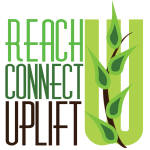Runa Heilung's Blog, page 17
August 10, 2015
Connecting People: Kayce Stevens Hughlett – Ideaphoric Mind
As an incurable ideaphoric, I am fascinated by the challenges and opportunities faced by other ideaphorics. Kayce Stevens Hughlett is one of those ideaphorics we can learn from!
Michele Jennae: When did you realize you were ideaphoric?
Kayce Stevens Hughlett: I grew up in a very structured environment, where the main message for young women was “Don’t think too hard”… or as they say in the South, “Don’t worry your pretty little head.” As a result, my ideas were squelched early on and I was taught to be practical and follow the rules. Since I was a good student, I learned this well and didn’t fully break open my creativity and ideaphoria until I was in my forties. Friends were always talking about how creative I was, but I didn’t see it in myself until I went to grad school and was challenged to think for myself.
MJ: How do you manage your ideas? ie record them on audio, app or paper? file or store them? organize them?
Kayce: This is a challenge for me. Writing is my main medium and I journal and free-write nearly everyday, so I’m generating new ideas all the time. My problem is that with so many ideas they can get lost. I’m always certain I’ll remember them or at least know where I wrote them down, but many do get buried inside my stack of notebooks. I’m trying to be more organized, so I’ve started using notecards and a notes app on my phone to make lists with dates and highlights of my ideas.
MJ: Does your ideaphoria challenge you with lack of focus, insomnia etc. as ideas rush through your mind?
Kayce: Insomnia is something I can’t control and I’ve found there are certain seasons or periods of time when my creativity runs through my mind like a rushing river. If it’s not too disruptive, I get up and work on the project that’s demanding attention rather than letting it roll through my head all night. I’ve created a lot of flexibility in my schedule in case I need a nap during the day to make up for overactive thinking at night. Sometimes I can slow the late night flow by simply jotting down a few notes. This lets the idea know I’m paying attention and will come back to it in the morning.
Meditation and yoga are also key components in calming my potential lack of focus.
MJ: Is your ideaphoria a good thing or a bad thing? Both? Please explain.
I find this question rather funny, because I’ve tried to take the notion of good or bad out of my vocabulary. My ideaphoria simply is. Most of the time it’s a bonus in my life, because I’m never bored and find life deliciously fascinating. On the other side, I really enjoy chilling out and sleeping. J
MJ: You are an author, and creativity coach. How does your ideaphoria work with your different pursuits?
Kayce: As an author and creativity coach, I think ideaphoria is the most awesome thing ever. When I write non-fiction, I can always find something I’m interested in. I write a lot about being present to what’s going on in life and there is always something going on! A couple of years ago after my first book was published, I hit a bout of writer’s block. To break free, I started writing fiction and ended up with a novel. I think ideaphoria was essential in this process, because I could let my imagination run wild with fun ideas.
I also love creating new programs and experiences to help other people find their own rhythm and joy. Ideaphoria helps me think on the spot and be present to the moment when I’m working with others. It’s also a bonus when I’m doing public speaking, because I weave together what’s happening in the room. I hate canned speeches; realizing I can think on my feet has opened new doors for me. I love ideaphoria!
MJ: When do you have the most ideas? In bed at night? In the shower? Driving? Etc?
Kayce: As I mentioned above, there are periods of time when they come to me in bed at night. I think, however, the most prolific amount comes when I’m outside in nature walking. I love to do what I call “walk and talk.” If I’m with the right person, my ideas start flowing like crazy around different programs and ways I want to do business. I also find if I’m stuck on a project, doing something different is always helpful. I put on music and dance, do yoga, make my bed, take a bubble bath, wash the dishes, or really anything that gets me moving. When my body starts moving, the ideas seem to flow more freely.
MJ: How do you decide if an idea is viable or if it belongs in the trash bin?
Kayce: I’m a very intuitive person and rely on my visceral responses. I also consider viability more closely when ideas repeat themselves over a period of time. Often I’ll have projects show up in my journal and I don’t pay attention until they repeat a few times or I get affirmation from another source. For example, I knew several years ago that I wanted to lead groups on destination retreats, but the timing wasn’t quite right. Nevertheless, signs and hints kept showing up until one day everything aligned and voilà, I’m taking groups to Paris.
MJ: What do you do with the ideas that don’t quite make it to development stage?
Kayce: I let them die a natural death. I trust that I’ll know if they’re ready to be resurrected. I have my journals for the last ten years, because I have a memoir bubbling around. Lately, however, I’ve wondered about the wisdom of keeping the journals. It may be time to let them go. I still don’t know and that’s where deep listening and trust play an essential role in my developmental process.
MJ: What are you working on currently?
Kayce: Let me see… I have a novel that’s in the layout stages with my publisher. The sequel started writing itself a few weeks ago. There’s a travel manuscript I plan to take on a writer’s residency this spring. I blog weekly, write for other online sites, and am collaborating with some entrepreneurs I recently met to share stories of survival and thriving.
Travel is an essential part of my business. I have two upcoming adventures to Paris, so I’m working with my partner to create and promote those. And since home is where I do most of my work, my husband and I decided to do an update of our offices and bedroom. I’m selecting colors and textures and letting my creativity run wild there. And I’m in the final stages of a ten-week online retreat centered around archetypes and expressive arts. If you check back tomorrow, the list may be different. J
 Kayce Stevens Hughlett is an artist of being alive. Her passions include writing, speaking, lifestyle coaching, and taking groups for soul strolls in Paris. Her 2012 non-fiction book, As I Lay Pondering: daily invitations to live a transformed life is a lyrical and lucid treasure that invites readers to new awakenings throughout the year. It’s a perfect gift for yourself or others. Learn more about Kayce and her offerings at www.liveittogiveit.me.
Kayce Stevens Hughlett is an artist of being alive. Her passions include writing, speaking, lifestyle coaching, and taking groups for soul strolls in Paris. Her 2012 non-fiction book, As I Lay Pondering: daily invitations to live a transformed life is a lyrical and lucid treasure that invites readers to new awakenings throughout the year. It’s a perfect gift for yourself or others. Learn more about Kayce and her offerings at www.liveittogiveit.me.
August 8, 2015
Do This ONE Thing For a More Powerful Social Media Share

Be authentic and add your meaningful comment when you share on Social Media.
That’s right. I am only going to share ONE thing to help you share more powerfully on Social Media.
1. Add a personalized comment to your share! That’s it. Simple. All she wrote.
Wait, what? You want to know why?
Let me set up the Why with a story…
I have a Facebook friend who shares a LOT of content from other people. It’s easy to hit the share button, and I know his heart is in the right place, but after a while, his shares become more noise. Because there is nothing personal about the share.
Taking the time to add something, and something personal at that, lets us know that the sharer not only truly values the content but the originator of the content AND the viewer of that content too. Namely, you and me.
It’s really what drives word of mouth advertising. A television commercial, TV program, blog post or otherwise may or may not reach me on an emotional level, but if a friend of mine says, “Hey, Michele Jennae, you really need to watch this and here’s why…”, I am much more inclined to not only view it, but to connect with it on the emotional or intellectual level that my friend suggested.
So when you hit Share on Facebook, use that middle option and add something personal about it. And on Twitter, Retweet with comment if possible!
Trust me! More people than you know will appreciate it, and just for that, your social status will rise.
If you’re looking for more ideas on sharing content, this Mashable article will give you TWENTY!
WAIT! Don’t forget to SHARE THIS! Comments welcome too! 
August 7, 2015
8 Words That Kill Innovation and On The Job Engagement
8 Little Words With Stopping Power
“Do the job I hired you to do.”
You’ve probably heard that before. I have, and multiple times. When I did, it was usually a signal for me to work on my exit strategy.
 Humans are creative. We can’t be put in boxes and be asked to limit our thinking, creating, and innovating without it having a negative impact on our work and our lives. When it impacts our work, it also impacts the company we work for who thinks that it’s better that we stay in the box.
Humans are creative. We can’t be put in boxes and be asked to limit our thinking, creating, and innovating without it having a negative impact on our work and our lives. When it impacts our work, it also impacts the company we work for who thinks that it’s better that we stay in the box.
We no longer live in the industrial age when automation meant everything. There was a time when it made sense, but no longer.
Frustration leads to burnout.
If you could add something to your current job description that would better utilize your talents, what would that be?
July 31, 2015
Choosing A Niche Can Be Easy Way to Determine Target Market
Zappos sells shoes. Michael Hyatt works with authors. Simply Contents, LLC works specifically with homes damaged in flood and fire.
Even Seth Godin has a target market.
 The each have a niche, which allows them to stand out! And their marketing is to their very own low hanging fruit.
The each have a niche, which allows them to stand out! And their marketing is to their very own low hanging fruit.
I wouldn’t go to Zappos for a purse, but they might sell them as an add on. But when I think shoes…I think Zappos.
I totally follow Michael Hyatt because his content, webinars, and expertise is directed primarily towards authors, and I fit the profile.
Shannon Ontiveros of Simply Contents LLC said her niche chose her. “I was in the emergency service industry for 10 years and just became very passionate about helping homeowners in these situations.”
While she says she does a packout for a move or a remodel from time to time, she mostly sticks to her niche. One look at her website www.simplycontentsllc.com would make any person going through the emotional trauma of fire or water damage to their home feel like Shannon is very equipped to meet their needs, and not just from the inventory and care of their personal items. Shannon is deeply caring about her customer’s emotional well being as well.
If you haven’t defined your niche or your target market, consider a group of people who you are uniquely qualified to serve. Are you a financial planner focused on helping the man going through divorce? Are you the Mary Kay lady who has a passion for making her client’s eyes look younger and more dynamic through proper skin care and makeup?
Notice the focus on the eyes, unlike the Mary Kay lady mentioned in this blog post who said her target market was anyone with skin. If I were concerned about laugh lines, or making my eyes stand out in some way, I’d call the eye specialist versus the generalist.
Other ways to determine target market is to focus on a demographic that you are passionate about helping. It could be single mothers. It could be first time business owners.
Or focus on an area of hobby. Are you an insurance agent for example who is also into crafting? Providing fellow crafters with booth insurance just might be a foot in the door to their other insurance needs.
Do you have other examples of target market or niche specialties? What is yours??
July 29, 2015
4 Ways To Tackle Your TO DO List
I was going to title this 4 Easy Ways to Tackle Your TO DO List, but changed my mind because it’s not always easy to do what we need to do, but these 4 ways will make your job simpler, but ONLY if you use all 4.
Let’s face it, there are things that you and only you can do, at least up to par. If you don’t do them yourself, your business or career could suffer. That doesn’t always mean doing these items is pleasurable, although I hope you actually look forward some of your TO DO items, but not doing them or doing them yourself could mean potential displeasure down the road, AND the addition of more completion items on your TO DO list.
Always do the two or three Most Important Tasks first and early in the day. Those are the key tasks that will make the biggest difference in your business or career.
2. Deletion
This one won’t be easy for the control freak, or the person who gets a kick out of checking things off of their TO DO list, but doing away with unnecessary tasks can be a huge relief and time saver too. Spending time on unimportant things decreases your overall effectiveness, even if giving you an illusion of efficiency.
Ask yourself, “If this task never got done, what’s the worst that could happen?” If in reality it wouldn’t affect your life, do away with it.
If you must, write down the task and draw a line through it to eliminate it.
3. Delegation
Delegation is another hard one for the control freak. You know the one who always says, “If it’s to be done right, you better do it yourself.”
This is a trap. You can’t do everything right, and even if you could do most things right in your business, there are a few key areas where YOU are at your BEST. You’re efficient and effective in those areas that make your business what it is. Stick to that and you’ll be happier too.
The rule of thumb is to delegate those things that someone else could do at least 80% as well as you. So it’s not perfect, but it might just be good enough.
4. Deferment
You’ve heard the adage “Why put off until tomorrow what you can do today?” Apparently it’s credited to Benjamin Franklin, who I daresay accomplished a lot in his lifetime, but I bet he used deferment when it counted.
While there is something to be said to getting something done today, not everything need be finished today. Consider the tasks priority in relation to your goals for the week or month, and postpone or schedule accordingly. And if it’s just a bucket list item, put it on another list to be reviewed at a later date so it’s not taking up mental energy.
Make a habit today of utilizing all four strategies to tackle your TO DO list and you’ll find that you are actually getting more done.
July 28, 2015
Bootstrapping vs. Venture Capital is Often a No Win Argument
When it comes to starting and growing a business, the decision to bootstrap it versus obtaining outside funding through venture capitalists isn’t an easy decision to come by. For most small businesses who can’t or don’t know how to obtain venture capital funding, the decision is made for them by default. Bootstrap it or die.
But, as I said in my last post, Bootstrapper isn’t a badge of honor.
The problem is that the decision is often approached as an either/or situation with no room for middle ground.
I am in agreement with Jason Fried and David Heinemeier Hansson, authors of the book Rework, in that often businesses that do not have upfront capital are often more creative. Funded businesses are often limited by the desires of their investors and they can and still do crash – and crash hard – once the money is spent.
BOOTSTRAPPING
Bootstrapping, in the sense of the financials, means not taking on debt or liabilities in order to grow your business. Beyond the financials, it takes on a very DIY (Do It Yourself) nature, since most small businesses are short on cash that allows them to outsource essential business needs such as marketing, accounting, administrative, strategy, and more.
“If only I had some wealthy person invest in my business.”
Someone is funding the business, often the business owner out of personal accounts, or with their own time and labor – also known as sweat equity. When the cash flow is short, they resort to doing the tasks that are not the focus of their business, but that their business still needs to function, like bookkeeping and filing taxes, or like marketing and order fulfillment. Hence, the DIY aspect, and often a DIAY (Do it ALL Yourself) approach.
VENTURE CAPITAL
Venture Capital can provide an incredible influx of dollars that can be, and often are, spent haphazardly. The pressure is on to provide a return for the investors, so everything is outsourced and quite quickly, sometimes leading to hasty if not bad decisions. The “cash” can be burned through and leave the business owner in a bigger bind than if he or she had never had the money in the first place.
In The Personal MBA, Josh Kaufman warns that Venture Capital should only be used “to accomplish things that would otherwise be impossible, (like building a factory).”
“Oh to be bootstrapping again.”
 Back to the argument of Bootstrapping versus Venture Capital. It’s not that it’s a bad argument per se, except that it only offers two options at opposite ends of the spectrum.
Back to the argument of Bootstrapping versus Venture Capital. It’s not that it’s a bad argument per se, except that it only offers two options at opposite ends of the spectrum.
There is room in the middle, between the DIAY attitude, and that pursuit of OPM (Other People’s Money). The challenge for most businesses is to dare to venture into that middle ground, especially when they believe that cash flow is the issue.
Being creative and tapping into resources can often provide a growth strategy that can get a business to a stage where a venture capitalist might take them seriously, and often they find that they never needed the capital at all.
The trouble is when business owners resort to business as usual for lack of knowledge or energy and desire to pursue the knowledge that can get their business to where they want to go, without mortgaging their dreams with debt.
A far cry from business as usual, Michele Jennae’s program Business Exceptional provides a framework for getting things done with creativity and resources that are available to everyone, but often not what they are taught, even at top business schools.
Do you want to know more about Business Exceptional? Join my mailing list below and be the first to know as the program is rolled out in coming weeks. Special offers for newsletter subscribers.
July 27, 2015
Time to Remove Your Bootstrapper Badge
 You’d think that Bootstrapper was a badge of honor, perhaps even bestowed by the Boy Scouts or Girl Scouts.
You’d think that Bootstrapper was a badge of honor, perhaps even bestowed by the Boy Scouts or Girl Scouts.
Why is it that the majority of Americans have bought into the independent, “I can do it myself”, bootstrapping mindset?
According to Wikipedia, bootstrapping became popular as a term, originating in the United States, in the early 19th century with the phrase “pull oneself over a fence by one’s bootstraps.” The phrase was meant to be absurdly ridiculous as it was downright impossible.
Picture it, you’re partially over the fence, and all you need to do is reach back and pull on your bootstraps to effectually fling yourself the rest of the way over the fence.
In essence, many business and career professionals are trying to do just that, not realizing just how impossible it is, but proud nonetheless of their exhaustive efforts.
ENOUGH!
“You can DIY, but you can’t DIAY! You can Do It Yourself, but you can’t Do It ALL Yourself.” ~Michele Jennae
It’s time to take off the Bootstrapper Badge and perhaps ask for help to get over the fence!
I can help if you’re not sure where to start! Email me at michele@michelejennae.com.
July 16, 2015
Social Media Isn’t About Reach
More likes. More followers. More numbers.
It’s easy to fall into this trap…thinking numbers give us reach. One group I know of talks about the combined reach they have through their six or seven degrees of separation, or their 1st, 2nd, and 3rd level contacts (I forget which), but it begs the question…
Do they really have the reach? Are they really reaching those millions of people collectively? You might say ‘potentially’, but even that’s a stretch.

Click Logo to find out More about RCU Women
Ammon Johns would probably agree with me. (I don’t know him personally, yet, but a few of my friends do and have had private and public conversations with him. One of those friends was Lany Sullivan. She interviewed him on her dynamic YouTube Talk show for Reach Connect Uplift Women, specifically on the topic of the searchability of social posts. The interview is less than 12 minutes and is packed with great information.
Not only are social network posts not searchable, according to Johns, but the reach is much less than we’d all like to admit, due to the magnitude of daily posts on the various social platforms. Everyone with a Facebook page knows that they’re not getting as many eyeballs on their posts as they used to.
The part of the interview that stood out to me and summed it all up was when Ammon Johns said, “Social Media is for listening.”
Social Media is for listening. ~@Ammon_Johns youtu.be/bcpVY0qWlTc
Click To Tweet
My personal philosophy is that Social Media is not about Reach. It’s about Reach Out. Social Media isn’t for Post Pushing. It’s for being “social”. Having conversations, making introductions, providing value, connecting people, ideas and opportunities (wink)!
Social Media isn't about Reach. It's about Reach Out! ~Michele Jennae
Click To Tweet
How do you REACH OUT on Social Media? Let me know in the comments below.
July 10, 2015
What’s The Big Deal With Target Market?
You’ve heard it over and over… marketers asking you what your target market is, business coaches telling you that your elevator pitches need to state who you want to work with. The classic evidence of the need for target market was at one particular Chamber of Commerce networking breakfast was the Mary Kay Cosmetics representative who stated that her ideal customer was anyone with skin. Unfortunately, it’s common for businesses to not want to feel like they are excluding anyone, as it might cost them business. The reverse actually happens.
If this woman had bothered to ask the audience to raise their hands if they used skin care products she might have found that only a portion of the room respond. Many people don’t go beyond their bar soap and shampoo. Had she then asked which of those used brand name cosmetics and skin care, the number might have dropped again. Evidently, despite the fact that everyone in the room had skin, they were not all her ideal customer, and that’s only 2 factors of many that might determine a highly targeted market.
A much better way to look at target market is to frame it with the words “probable purchaser” and then to profile that “PP” by a number of factors including age, income, and qualifying reasons why they might want your product (status, comfort, convenience, etc.).
Change your vocabulary
Instead of thinking target market, which can feel very broad, think probable purchaser.
A probable purchaser according to Josh Kaufman, author of The Personal MBA, is the type of person who is perfectly suited to what you are offering. He would tell the Mary Kay lady that she was trying to get everyone’s attention, when she should be focusing on getting the attention of the right people at the right time. Possibly women wanting an upscale brand with the personalized attention of a beauty consultant at their beck and call, but certainly not the lady interested in the 99 cent drugstore cosmetics.
A blog post from sales guru Jeffrey Gitomer from back in 2004 talks about removing prospect from your vocabulary and replacing that with “probable purchaser.” Using probable purchaser gives you more focus, more definition to your marketing.
In my coaching, I use a Target Market PIC (Profile of Ideal Customer) worksheet and exercise that addresses the target market from 4 angles, including demographics, internal and external motivators, and differentiating issues or problems that the “PP” is looking to hire for. Download worksheet for FREE!*
*This is general worksheet template. My work with my clients deals with their specific industries and business/career goals directly. Need more help? Email me at Michele@michelejennae.com or call 916 538 0464 to set up a consultation!
Define your Probable Purchaser and you’ll have found your target market!
Why oh why is it so easy to settle for less?
Ummmm, since when? Need I say more?
Because no one will criticize you?
Who are you kidding? Those who will criticize will criticize anyway. Who cares!
Most of the time, we think people are far more critical than they actually are. Granted, there are always the dumb-head nog-nogs (that’s the word my sweetheart uses when he is trying to mind his language!) that just won’t be anything but trite and envious as you make a better life for yourself. Too bad for them. But, generally most people are more concerned with what other people think of them than they are with what other people are doing. You could be one of them. You prove my point.
So, as long as you are thinking about yourself, think positive!
Because depression is easier?
I’ve been there. Depression SUCKS! It sucks the living daylight out of you and is a sorry bedfellow. Depression also sucks away the energy of those around you, trying to love you and care for you. It sucks away your bank account in the wrong kinds of therapy – buying things you don’t need and might never use, spending on pharmaceuticals that by and large are designed to keep you buying pharmaceuticals, doling out the dough for other pain-numbing substances that do nothing to get us past the pain and on to a better life.
Depression isn’t easier, and is sometimes a condition that requires medical intervention. This post is not meant to diagnose or prescribe remedies for depression. It is just food for thought.
Because it requires change?
Remember, nothing is stagnant. You change for the worse or you change for the better. Change is painful. No pain, no gain.
Gaining muscle requires the pain of continual physical exercise. The alternative is atrophied muscle which will bring on all sorts of body pain.
Gaining knowledge and experience requires the pain of homework, lost leisure time, the possibility of mistakes. The alternative is an atrophied brain that struggles to make significant connections with the good in life, people, places, things, information, opportunities….
Because it takes so much work?
Hells yeah, it takes work. LOTS OF IT! If you are doing what you are meant to do, the work energizes you, gets you up in the morning, gives you purpose, inspires others.
Since when is work a four letter word? You know, the type that is a BAD word. Entitlement only leads to mediocrity. Hard work is the secret to a fulfilled life. Finding the right ‘hard work’ for you, the kind that makes your life worth living, the kind that you were called to do, the kind that allows you to make a difference, is the secret to your fulfilled life!
“All happiness depends on courage and work.”
— Honoré de Balzac
“How dare you settle for less when the world has made it so easy for you to be remarkable?”
― Seth Godin
Is it easy to be remarkable? YES! Just be YOU! And let the world know who YOU are!





